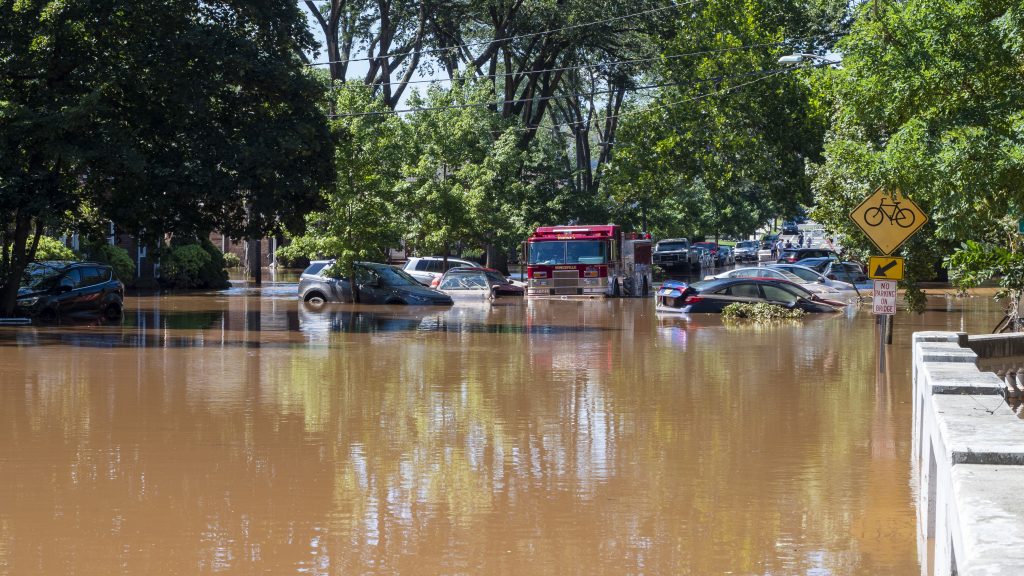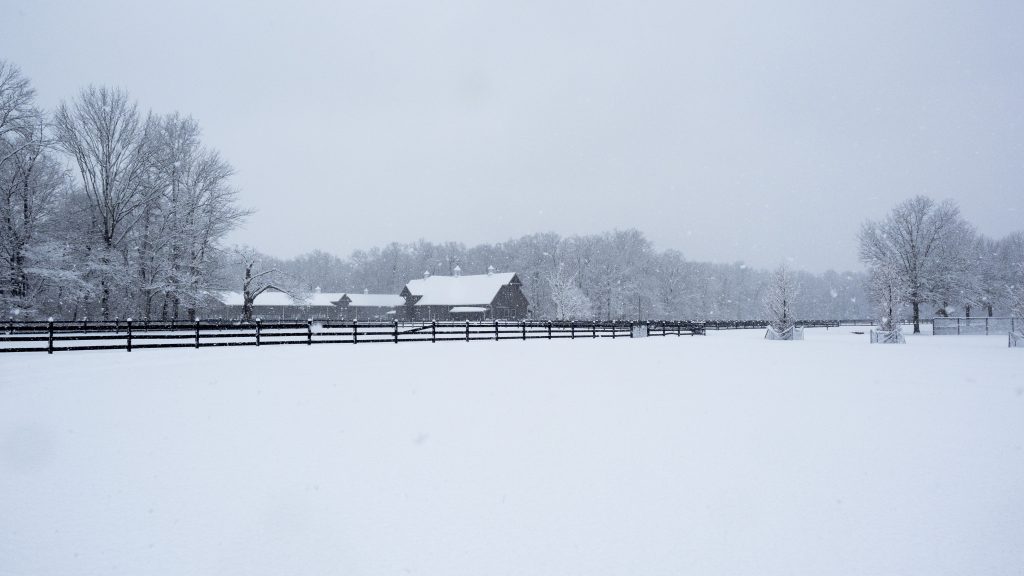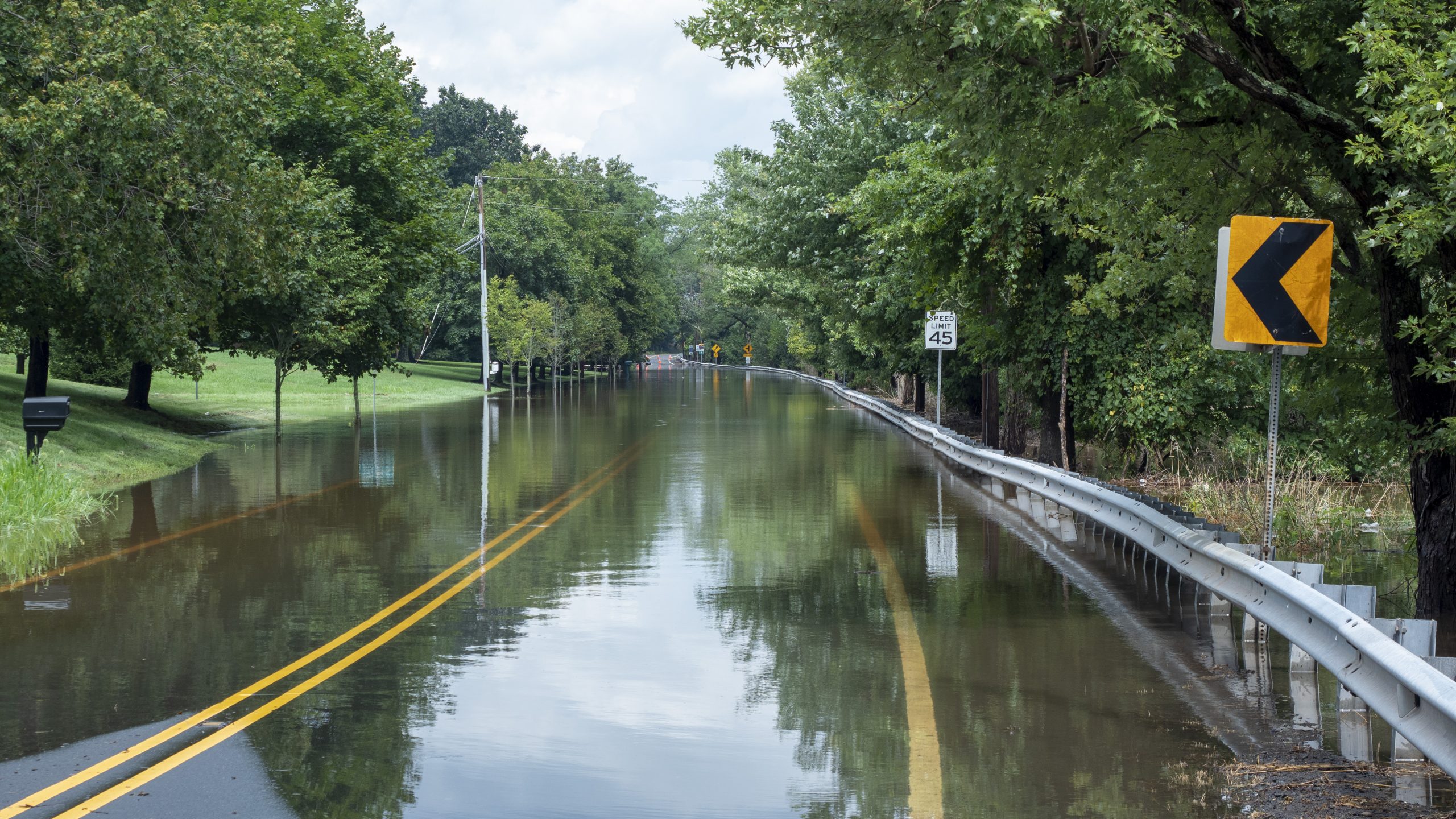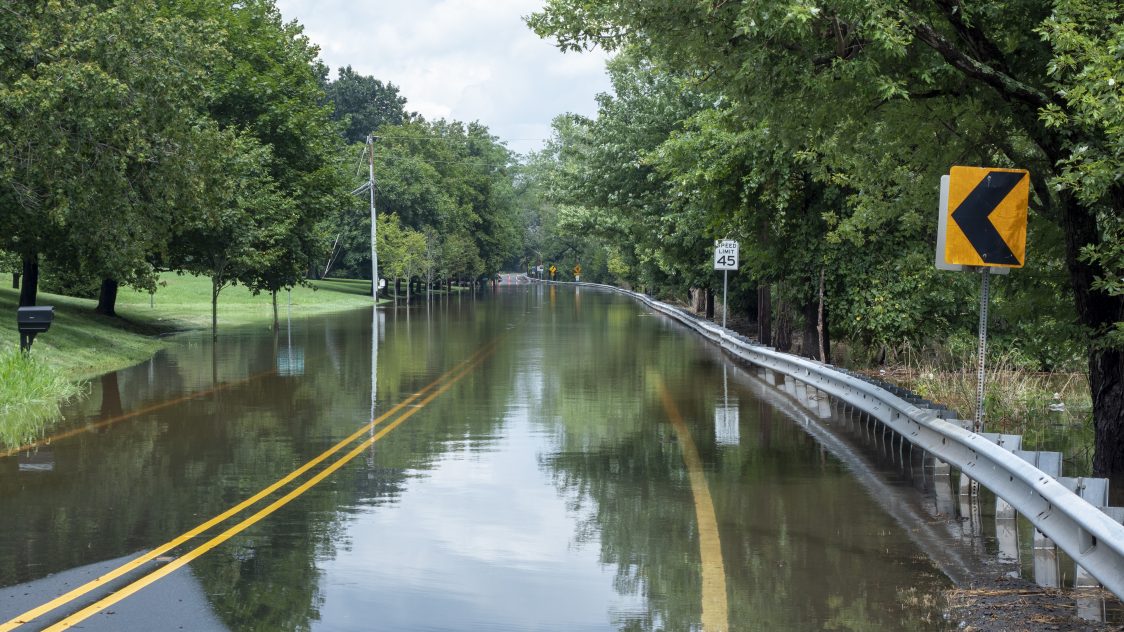By Carol Peters, EOAS Communications Team
From the snowiest February on record in Northern NJ, to summer hail, to the devastation wrought by the remnants of Hurricane Ida, a number of dramatic, dangerous, and deadly weather events occurred in NJ last year. David Robinson, New Jersey State Climatologist and #EOAS faculty member, reports on how he and his staff ranked them into a list of the top ten.

New Jersey experienced some particularly devastating weather during 2021 (the remnants of Hurricane Ida, which hit NJ on September 1, was the second deadliest storm in the state’s history, after Superstorm Sandy in 2012).
Many state residents have a strong sense of the most harmful or memorable weather events they experienced during 2021. But based on the data, how do the state’s leading weather experts rank them?
For answers EOAS asked faculty member David Robinson, a distinguished professor in the Department of Geography, Rutgers School of Arts and Sciences, who has served as the New Jersey State Climatologist since 1991.
Robinson and his staff at the Office of the New Jersey State Climatologist (ONJSC) annually compile a list of the top ten weather events of the year. Here are a few of the report’s highlights from 2021:
Winter: Northern NJ had its snowiest February (36.9”) in 2021.

Summer: 2021 was the third warmest year of the past 127. Smoke from western U.S. forest fires darkened NJ skies; the smokiest days were July 20–21 and July 27–28. Six tornadoes were reported in NJ on July 29, the second most in one day since at least 1950.
Fall: N.J. had the latest first fall freeze on record: November 2 at Pequest (Warren). It was the first year since at least 1900 that NJ has not had an October (occasionally September) freeze at some location.
Read our Q&A below with Robinson to learn more about the record-breaking flooding, hail, wind, and other unusual weather events that New Jersey experienced last year, the weather event that Robinson personally ranked #1, what he believes are the greatest weather and climate threats facing the state, and what he enjoys the most about tracking NJ’s weather.
How do you gather weather observations from across the state? For example, how did you determine that East Windsor received the most rain (in the state) during Hurricane Henri (August 21-23)?
There are three means of securing daily weather observations from locations around NJ. First, there are National Weather Service reports from their Cooperative Weather Observer network of several dozen stations and reports from trained spotters who submit reports of extreme events. The Coop network goes back over 100 years and is the backbone of our national climatological knowledge. These are daily reports. Next, there is the volunteer Community Collaborative Rain, Hail, and Snow network (cocorahs.org). The state climate office oversees the NJ “chapter” of this nationwide group. Daily reports are provided by 300 volunteers who measure precipitation and submit their reports online. Third, there is the Rutgers NJ Weather Network. Our office operates this mesonet of 66 automated weather stations situated from High Point Monument to West Cape May. Observations of many weather variables are transmitted to our office every five minutes and made immediately available via the network website (njweather.org).

How did you decide what made the top-ten list for 2021 and what didn’t?
The weather and climate knowledge of myself and Assistant State Climatologist, Mat Gerbush, is employed in the quality evaluation of all data pouring into our office. This is augmented by quality assurance software and the assistance of student interns. Our evaluations often employ maps, an approach that proves quite useful given the high spatial density of observations thanks to the volunteers and the automated stations throughout NJ.
What did you find (personally) to be the most significant weather event in 2021? Why is it your #1?
Without question, it was post-tropical cyclone Ida. While it ranked number 1 on the top-10 list of NJ weather/climate events for 2021, it could have ranked first (flash flooding with 30 tragic deaths), second (river flooding resulting in substantial damage), and third (three tornadoes, including NJ’s strongest in over 30 years). More can be read about this most significant NJ weather event since Sandy (2012) here. I realize the question included “personally,” and I was blessed not to be directly impacted by this event. However, after 30 years as State Climatologist and Ida occurring on the day (September 1) of my 30th anniversary this truly was a personal event to me.
How are the findings impactful for New Jersey? What do they suggest about the weather in 2021 and beyond?
It is imperative that we gather the best weather and climate information throughout NJ to ensure that immediate concerns for the health and safety of residents are addressed. It is also critical for us to develop an understanding of weather events that immediately become part of the climate record so that we can be better prepared for future extreme weather threats and as a source of accurate information as we evaluate potential changes in the future magnitude and frequency of variables such as temperature, precipitation, storms, etc.
What do you think is the greatest weather and climate threat facing New Jersey in the future?
It is difficult to choose just one threat but taking the entire population of the state, I’ve long spoken of drought as being the greatest climate threat given our need for freshwater resources. In terms of a short-term weather threat, it would be a life-threatening major hurricane impacting coastal and inland areas. Runners up would be sea level rise and increasing temperatures on the climate side and extratropical storms (such as nor’easters) and heatwaves on the weather front.
Can you predict if New Jerseyans should buy more sunscreen or snow shovels in 2022?
Just because the overall climate of NJ is warming doesn’t yet mean that we won’t continue to experience snowstorms. So, keep the shovels handy most every winter. Given the increased warmth of springs and falls, it is likely people are spending more time outside over the course of the year (hope so at least). Thus keep the sunscreen at hand.
What do you enjoy the most about being NJ state climatologist? What are the most challenging aspects of the job and why?
I most enjoy helping people to better understand the ins and outs of New Jersey’s weather and climate. This includes giving public presentations (including to schools), providing media interviews, and engaging with individuals within state agencies, the private sector, and non-governmental organizations. All of this provides me with the need (I consider it an enjoyable opportunity, dare I say “excuse”) to keep my finger on the pulse of all-things weather and climate as they pertain to the Garden State, where I began to keep weather records in fourth grade.
The most challenging aspect of the job is to find enough hours in a day to satisfy myself with accomplishments within the state climate office while also fulfilling my responsibilities in the classroom and making progress with my global snow research. This includes the difficult assignment of finding continued financial support for a wonderful small staff for the state office and for the snow research. I suppose this all comes down to finding it difficult to know when to “close shop” for the day….or week! Not the worst of problems and one that clearly indicates that I couldn’t imagine having a more fulfilling career.
For more information, see:
https://njclimate.org
https://njweather.org
https://snowcover.org



